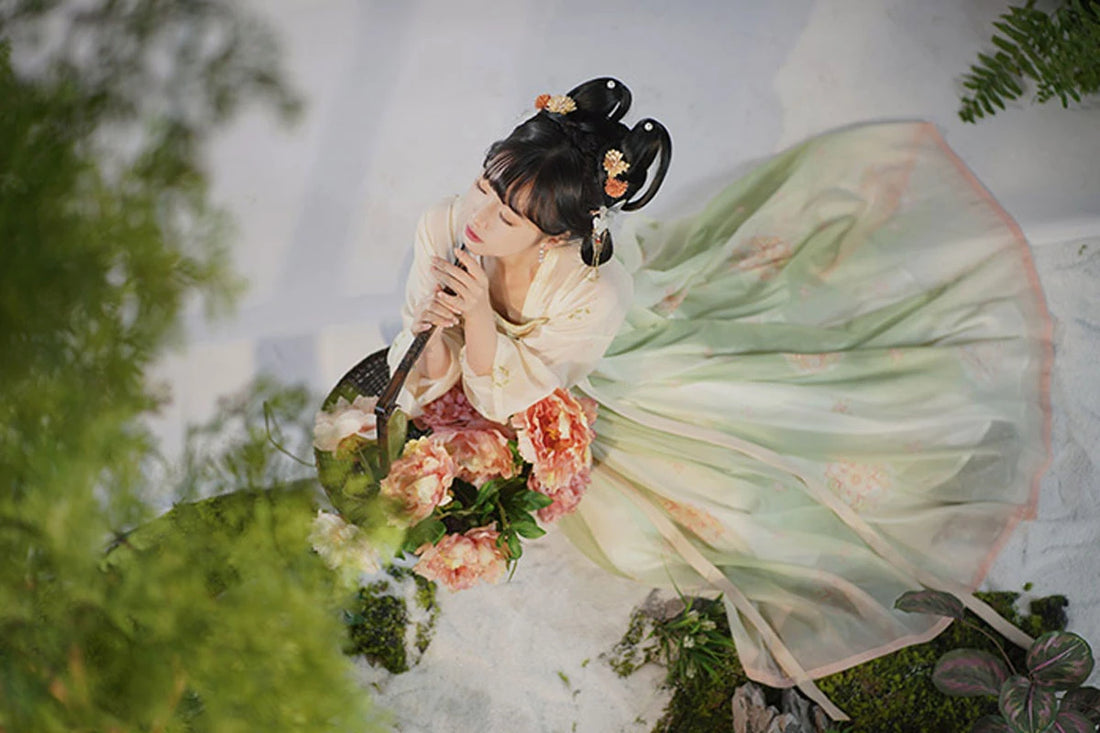WHAT MAKES HANFU, HANFU?
What defines 漢服/汉服/han4 fu2/hanfu? What sets it apart from everyone else? How do we know when something is truly hanfu, as opposed to hanfu-inspired? These questions can be kind of scary when you first look at them, scared of making a mistake—don’t worry, it’s actually pretty simple!

First, we should understand that hanfu isn’t just something that we derived off of paintings and imperial dramas. Every type of hanfu that we have today was recovered as a rotting piece of cloth that we dug up from the ground, studied by historians and made into clothing patterns (‘pattern’ refers the shape of the fabric pieces and how the pieces are sewed together, not the ‘pattern’ printed on the surface of a piece of fabric or color) that we use today to make hanfu. So everything that counts as hanfu, we have a real historical artifact to back up its construction. Sometimes different types of hanfu are even named after where the artifact was found.

Most hanfu enthusiasts fall into a category that we like to call 形制/黨/形制党/xing2 zhi4 dang3/construction enthusiasts, which is a very awkward translation. Essentially what this means is that the general consensus for the definition of hanfu is that we care only about the construction/clothing pattern to verify its status as hanfu. The actual type of fabric, the print on the fabric, that kind of thing doesn’t matter, just that the shape of the hanfu is correct.

If the construction of the hanfu is modified, or there’s no artifact recovered that we based the pattern off of but only paintings or pottery to guess from, we call the piece 改良漢服/改良汉服/gai3 liang2 han4 fu2/modified hanfu or 漢元素/汉元素/han4 yuan2 su4/Han-inspired. Still very popular, still awesome to wear! And honestly, half the time people don’t bother to tell between the difference, because the changes are so subtle.

In our coming articles we’ll go over the characteristics of each component that span across almost all the dynasties and represent a key feature of hanfu itself that you can use to recognize something as hanfu or hanfu-inspired. Before we do that, though, let’s actually go over the components!
THE COMPONENTS: OUTFITS
Most hanfu can be divided into a couple categories: tops, bottoms, fullbody robes, underwear, outerwear and accessories. We’ll be most concentrated on tops, outerwear, and fullbody robes for the next few articles. What’s important to know is that for these three categories, which cover the upper body, there are a few vital parts that they can be split into.
Each of these can have a different basic construction of its body. This includes the part directly covering your torso, the back of the piece, and a little bit of the upper arms, as well as some features attached to this part of the clothing. The construction of this part can tell you if you’re looking at a top, a robe, and a lot of other simple vocabulary that we’ll go over later.
There are also several types of collars, from cross-collar to slanted collar to parallel collar and so many more. These evolve a lot across different dynasties and can be matched with a lot of different clothing bodies.
Another mix-and-match element that we can’t forget is sleeves. While hanfu is known for its big sleeves, there’s more variation there than you realize—not only are there a lot of different types of big sleeves, there are a lot of iconic narrow sleeve silhouettes too. Like before, you can mix these with different bodies and collars for different kinds of hanfu.
As for bottoms, we’ve usually got skirts and pants—at the time of this article I only have an article on the type of hanfu skirts written here. Underwear or underlayers as I like to call it since they’re often stacked on top of each other have their own article here, which may or may not be added later, and accessories are way too vast for me to get in one article—we’re sticking to clothing-clothing for now!

